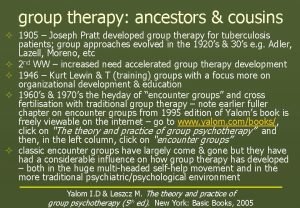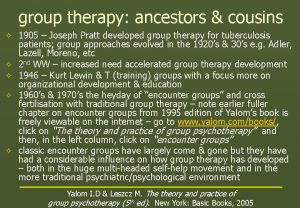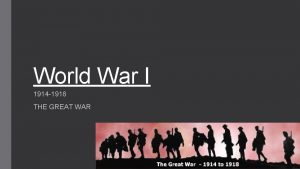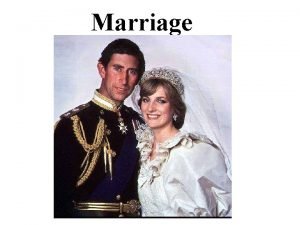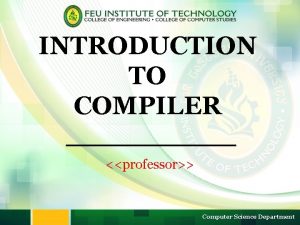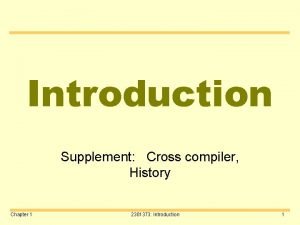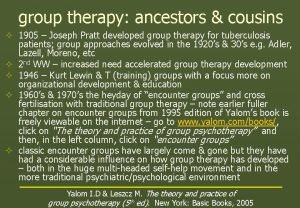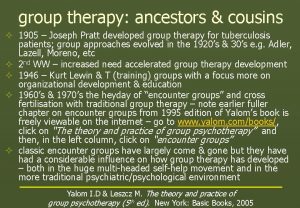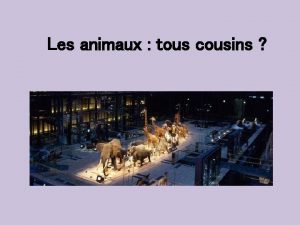group therapy ancestors cousins 1905 Joseph Pratt developed






- Slides: 6

group therapy: ancestors & cousins ² 1905 – Joseph Pratt developed group therapy for tuberculosis patients; group approaches evolved in the 1920’s & 30’s e. g. Adler, Lazell, Moreno, etc ² 2 nd WW – increased need accelerated group therapy development ² 1946 – Kurt Lewin & T (training) groups with a focus more on organizational development & education ² 1960’s & 1970’s the heyday of “encounter groups” and cross fertilisation with traditional group therapy – note earlier fuller chapter on encounter groups from 1995 edition of Yalom’s book is freely viewable on the internet – go to www. yalom. com/books/, click on “The theory and practice of group psychotherapy” and then, in the left column, click on “encounter groups” ² classic encounter groups have largely come & gone but they have had a considerable influence on how group therapy has developed – both in the huge multi-headed self-help movement and in the more traditional psychiatric/psychological environment Yalom I. D & Leszcz M. The theory and practice of group psychotherapy (5 th ed). New York: Basic Books, 2005

major experiential group research “the most extensive controlled research inquiry into the effectiveness of groups” ² 210 stanford university students were randomized to groups and compared with 69 matched controls ² 18 different groups for 30 hours over 12 weeks ² expert facilitators from 10 different schools encounter/personal growth; gestalt; TA; sensory awareness; NTL group process training; psychodrama; Synanon; psychoanalytic; marathon; encounter-tape ² assessment by participants, observers, group leaders, significant others – during and at the end of the group, and also at six month follow-up

major experiential group research key finding: “In some groups, almost every member underwent some positive change with no one suffering injury; in other groups, not a single member benefited, and one was fortunate to remain unchanged. ”

leader assessment: methods all meetings were observed (and tape recorded) – trained raters analyzed and coded all leader behaviours/statements; participants also completed questionnaires about the leaders therapeutic school that the leader represented (e. g. gestalt, psychodrama, transactional analysis, etc) had very little bearing on their behaviours/statements in the group factor analysis of what the leaders said and did highlighted four important leadership functions which had clear and striking relationships to outcome – these are emotional activation, caring, meaning attribution & executive function

leader assessment: cluster analysis ² emotional activation challenging, confronting activity; intrusive modelling by personal risk taking and high self-disclosure ² caring offering support, affection, praise, protection, warmth, acceptance, genuineness, concern ² meaning attribution explaining, clarifying, interpreting, providing a cognitive framework for change; translating feelings and experiences into ideas ² executive function setting limits, rules, norms, goals; managing time; pacing, stopping, interceding, suggesting procedures

leader assessment: best outcomes e t a ² emotional activation r challenging, confronting activity; intrusive modelling e by personal risk taking and high self-disclosure d ² caring m offering support, affection, praise, protection, warmth, acceptance, genuineness, concern ² meaning attribution o explaining, clarifying, interpreting, providing a cognitive framework for change; translating feelings and experiences into ideas h g i h h g e t ² executive function a r setting limits, rules, norms, goals; managing time; e d pacing, stopping, interceding, suggesting procedures o m
